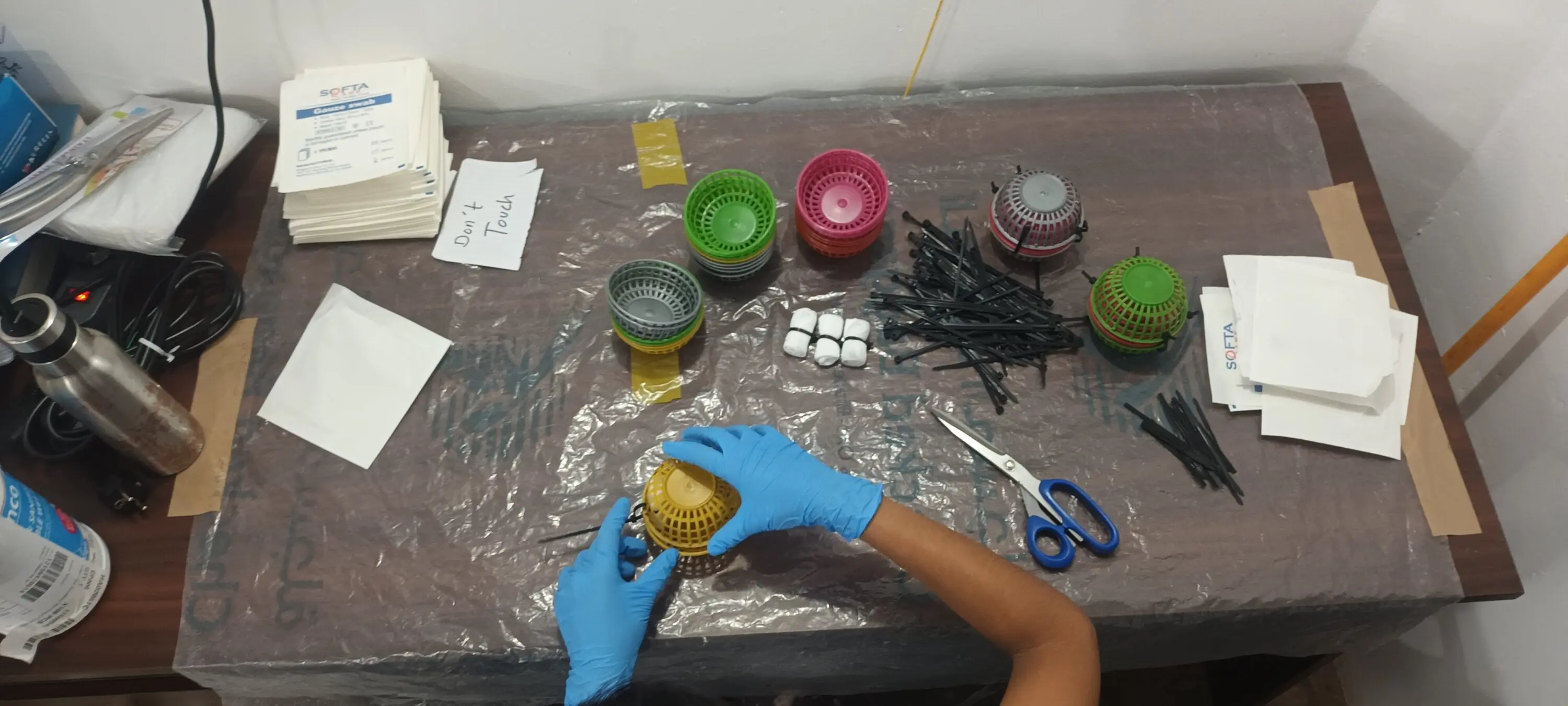Stepping into the world of fisheries
My first encounter with mantas, mobula rays, hammerheads, silky sharks and many more gentle giants was at the Valaichchenai Fisheries Harbour, located on the East Coast of Sri Lanka. Caught as bycatch, but sold nevertheless for their gill plates, fins and low-quality meat, they are not seen any differently to commercial fish such as tuna. Regardless of having grown up in Sri Lanka, such elasmobranch (shark and ray) diversity gliding through our waters was never common knowledge, a privilege unfortunately bestowed on the fisheries sector and a few conducting fisheries-dependent scientific research.
Data collection for my research project is how I ended up at the fisheries harbour and beach landing sites at Valaichchenai. The project had me working closely with boat owners, crew and traders, utilising two types of boats and diverse gear, going out either for a single day or weeks at a time. I was trying to figure out how to collect wastewater samples produced during their fisheries operation, from which I will be able to extract shed DNA from the catch (also known as environmental DNA/ eDNA). For this, I gave boats metaprobes; rolls of cotton-gauze tied to a hollow perforated sphere, to either attach to their fishing gear or leave within their boats during the fishing trip. On their return, they would give back the metaprobes along with a bottle of wastewater collected from within their boats, and I recorded their whole catch by observation to help verify the accuracy of eDNA.

Assembling metaprobes. Photo © Rahal Rambukpota | Blue Resources Trust
As straightforward as it sounds, the spontaneity of how this fishery works made sample collection complex, and it was made clear why monitoring artisanal fisheries was difficult. For instance, at the Valaichchenai Harbour, boat crews haphazardly decide when to leave or return. Sometimes metaprobes were misplaced or buried beneath nets piled high for the next trip. On other days, they called too late for us to collect water ourselves, handing over samples in non-sterile bottles. Days such these, catch would already be sold before we can take observations, leaving us to rely on traders’ lists with vague records of “sharks” and “rays”, or by showing pictures of commonly caught elasmobranchs to get a proper identification, or asking boat crew/owners to take photos for us.

Boat owner attaching metaprobe to the bottom-set gillnet. Photo © Shownath Sitsabeshan | Blue Resources Trust
During this time, I realised that no amount of experience in the field would have helped me overcome the challenges I faced. Working within fisheries for scientific research requires gaining the trust and knowledge of the people that frequent the landing sites and harbours. I learnt that I could not change their operations to suit my project but had to change my method to suit the way they work. In terms of fisheries monitoring, this is what is practical, and any newly designed tool needs to account for the dynamic nature of artisanal fisheries.
